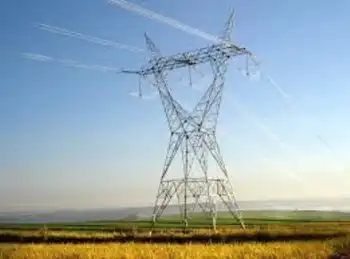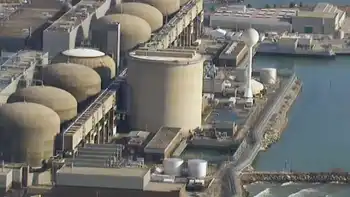Destroying sewage while producing power
By Orlando Sentinel
High Voltage Maintenance Training Online
Our customized live online or in‑person group training can be delivered to your staff at your location.

- Live Online
- 12 hours Instructor-led
- Group Training Available
If city officials and their private-industry partners are right, it could be the biggest thing in sewage treatment since the flush toilet.
"We call it poop to power in five minutes," said project consultant Roy Pelletier.
While the five-year, $8.5 million project has drawn little attention locally, a small, experimental test plant off busy Alafaya Trail near the University of Central Florida has drawn visitors from Mexico, Rio de Janeiro, Abu Dhabi, Canada, Europe and elsewhere in recent weeks.
They have traveled here because they've heard there may be an answer to an intriguing question that has dogged scientists for years: What if you could take sewage and get rid of it cleanly and quickly, without dumping it in rivers or landfills — and generate pollution-free electricity at the same time?
"The technology has the potential to revolutionize how wastewater is processed — the destruction of all organics, the generation of electricity, a completely green footprint," said Don Morgan, CEO of SuperWater Solutions, a Wellington company working with Orlando.
Treated sewage used to be dumped into waterways, but technological advances and tougher regulations ended that practice decades ago.
Orlando treats more than 35 million gallons of sewage a day, essentially by feeding the outflow from the city's toilets and sinks to bacteria. The process produces reclaimed water that's clean enough to be piped to some neighborhoods, golf courses and road medians to irrigate flowers and grass.
But there's another byproduct of the treatment process that's harder to deal with. The bacteria that gobble up the sewage reproduce as they eat, so as the sewage goes away, it's replaced with smelly, mud-like piles of microorganisms. That's sludge, and there's a lot of it.
At Iron Bridge — just one of Orlando's three treatment plants — workers have to get rid of as many as 15 tractor-trailer loads of sludge a day, seven days a week, 365 days a year. The city's disinfected sludge is spread over fields and pastures. Property owners are happy to get it, because they don't have to buy fertilizer.
But sludge can't be spread on land that's wet — a problem during stormy summers — and environmental rules that will further restrict the practice are on the way.
So, what to do with all that sludge?
Orlando inked a deal with SuperWater Solutions to develop a way to treat sludge using a process called "supercritical water oxidation." Several other companies also are testing its use in treating wastewater, as well as industrial and hazardous waste. Plants are now under construction that will use it to destroy the military's stockpiled chemical weapons.
But stubborn technical hurdles have kept it from being commercially viable.
"For 20 years, people at MIT and all around the world have been trying to do this," said Orlando environmental services director David Sloan.
Here's how it works: The sludge is thickened, fed through a grinder and subjected to extremely high pressure. The pressurized mix is pumped through a reactor, along with pure oxygen, where it's heated to more than 700 degrees Fahrenheit.
A strange thing happens to water when it's put under such extreme pressures and temperatures. It's no longer one of the three states — liquid, solid or gas — that kids learn about in school. Rather, it's "supercritical water," a fourth state that's something between a liquid and a gas and is a powerful solvent.
Within the reactor, supercritical water destroys more than 99 percent of organic matter, including sludge. The process leaves behind inorganic salts, clean water and liquid carbon dioxide.
City officials think they can make money from the byproducts. Carbon dioxide could be sold to beverage companies, and the powdery salts are mostly phosphates that could be used by fertilizer manufacturers.
Another byproduct is heat, which can easily be captured and used to power an electrical turbine. Sludge holds about as much energy as coal, and city officials estimate that treating Orlando's 35 tons a day will produce enough electricity to power about 1,183 homes — without pollution or greenhouse gas emissions.
The reactor would use about half the electricity, and the rest could be sold back to the power company — at a "green energy" premium.
The test reactor in a corner of the city's Iron Bridge plant came from a partnership between the city and SuperWater Solutions, which provided the technology. Orlando paid for the development and construction of the system, and city engineers, chemists, mechanics and computer technicians helped figure out how to make it work.
SuperWater Solutions said the technology is now ready to be taken to the commercial market, with the potential for full-size treatment systems built around the world. Orlando will likely be the first customer, with construction of a full-size unit by 2013.
Under their agreement, if SuperWater Solutions builds plants elsewhere, Orlando will be paid royalties. For every ton of sludge treated anywhere in the world, Orlando will earn $2.50. SuperWater Solutions projects royalty payments of $60 million over the next 20 years.
It's not a sure thing. Other companies are racing to perfect their own technology.
But for Orlando officials, the money isn't the point. They simply want a sustainable way to get rid of their sludge, a chore most residents don't want to think about.
"Putting a man on the moon is sexy, but getting rid of poop is not," City Commissioner Patty Sheehan said.











